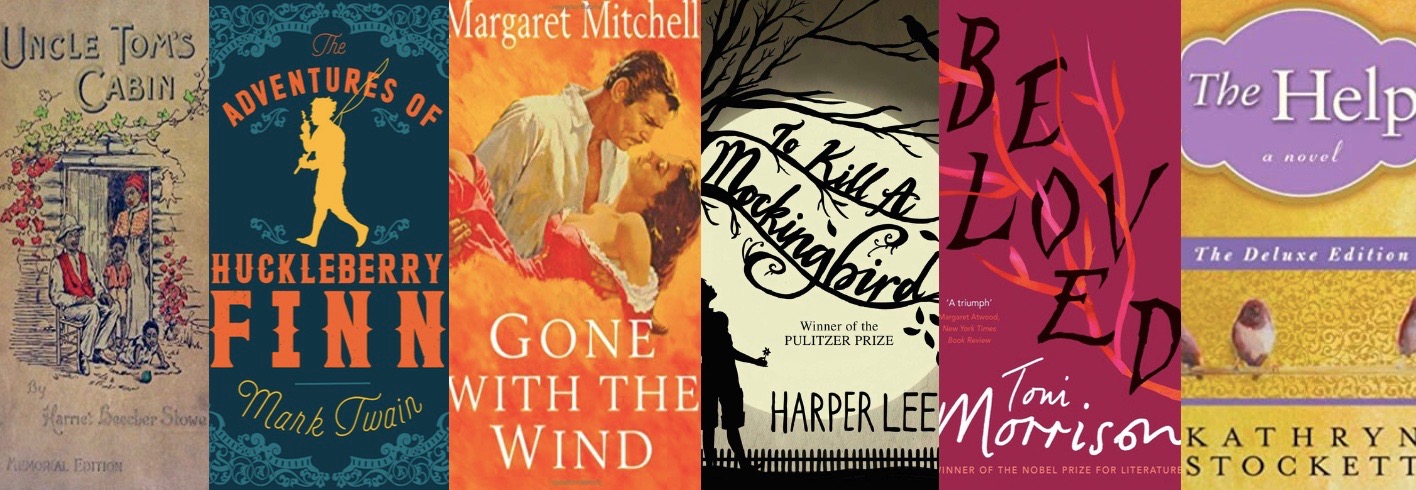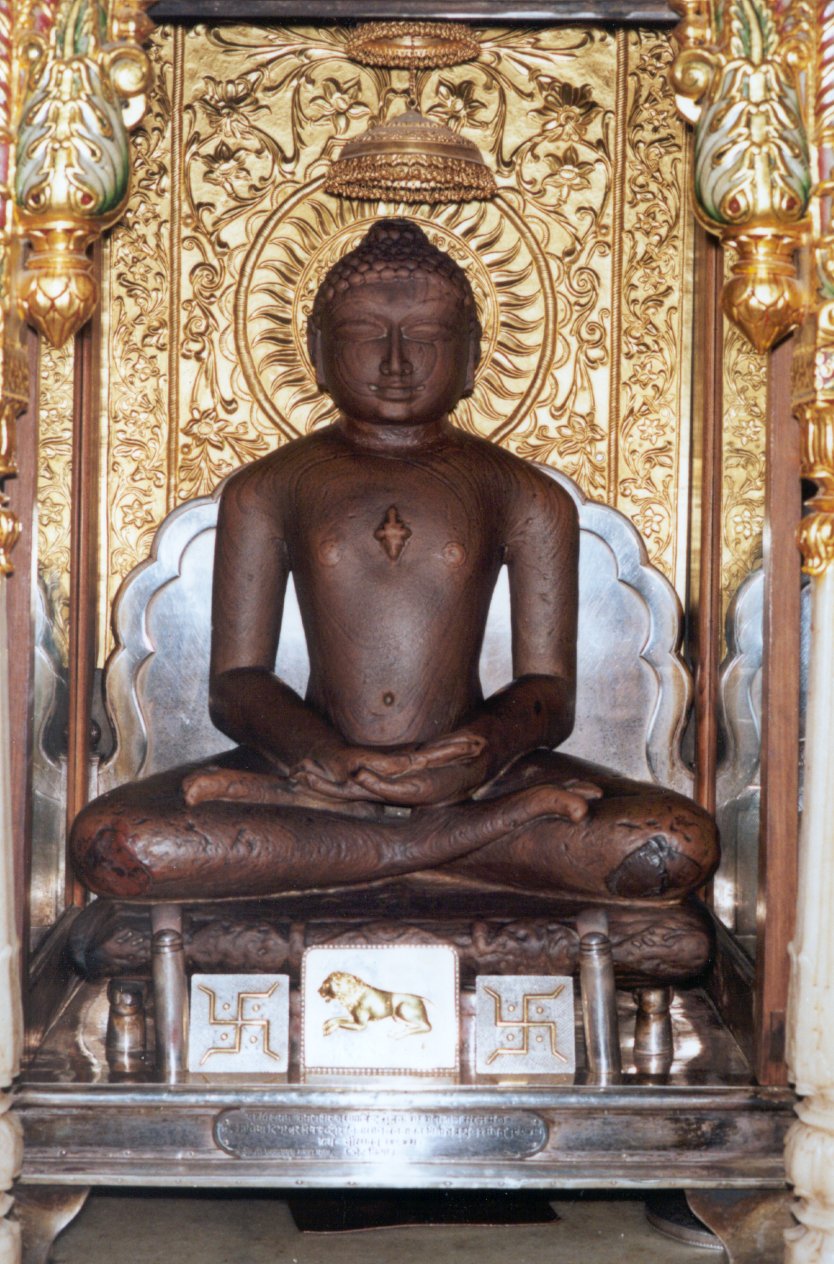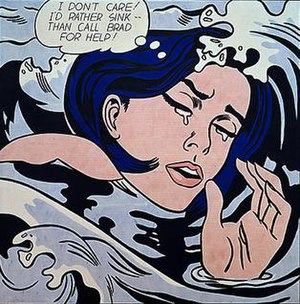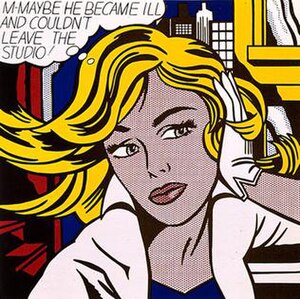‘It’s too late!’[1] Tess Durbeyfield’s haunting utterance comes at the climax of Thomas Hardy’s Tess of the D’Urbervilles (1891) and expresses Tess’s anguish at her husband, Angel Clare’s, return. Although Angel and Tess wish to reunite, they cannot, as Tess has become the mistress of Alec D’Urberville, the man who sexually abused her in her youth, in exchange for financial support for her family. Catherine Earnshaw in Emily Brontë’s Wuthering Heights (1847) finds herself in a similar scenario, as she cannot reunite with her lover, Heathcliff, upon his return, because she is married to Edgar Linton. As well as being unable to reconcile with their romantic preferences, Catherine and Tess find themselves in conflict with different conceptions of womanhood and social expectations of how they should behave and appear. This conflict is caused by Catherine’s and Tess’s experiences of Alec, Angel, Edgar and Heathcliff. Tess must contend with Alec’s and Angel’s contrasting perceptions of her body, leading Penny Boumelha to liken Tess to a ‘blank space’ who is subjected to their views.[2] In contrast, Gilbert and Gubar recognise that Catherine’s conflict revolves around the different conceptions of ‘ladyhood’ that Edgar and Heathcliff are associated with.[3] The effect of this is both heroines’ realisation that these different conceptions of womanhood are restrictive to them. Catherine and Tess also come into conflict with Christian religious orthodoxy, which is caused by their associations with the natural world. Shirley A. Stave attributes Tess’s conflict with religious orthodoxy to her paganism, describing these systems of belief as antithetical to one another.[4] It is Parson Tringham who alerts Tess to her incompatibility with religious orthodoxy. Similarly, Francis Fike recognises that Catherine comes into conflict with the ‘religious formalities’ that servant Joseph forces upon her.[5] The effect of Catherine’s and Tess’s associations with the natural world is their rejection of religious orthodoxy. The outcome of these conflicts is Catherine’s and Tess’s deaths. I will first explore the cause, effect and outcome of Catherine’s and Tess’s conflict with religious orthodoxy, by drawing on the views of Stave and Fike. Then, I will explore the cause, effect and outcome of Catherine’s and Tess’s conflict with different conceptions of womanhood, by drawing on the views of Boumelha, Gilbert and Gubar. Finally, I will recognise that Catherine’s daughter Cathy Linton and Tess’s sister Liza Lu do not possess their predecessors’ flaws, meaning that they are able to avoid the conflicts that their predecessors encountered. This extended essay will explore the conflicts that Catherine and Tess encounter in conjunction with each other, a task that the above critics have not undertaken. By examining the conflicts that Catherine and Tess encounter in relation to each other, this essay will argue that both novels detail the stories of two heroines who are in constant conflict with the male dominated societies that they inhabit, which prevents them from living as their primal selves.
Catherine’s and Tess’s associations with the natural world cause their conflict with religious orthodoxy. Tess’s associations with the natural world are demonstrated by her paganism. Stave argues that Hardy’s conception of paganism describes a scenario in which humanity cannot be separated from the natural world.[6] When Tess is introduced, she is partaking in the ‘local Cerealia’ (p. 13). This ancient festival celebrates the Roman goddess of agriculture, Ceres (p. 403, n. 3). In celebrating agriculture, Stave recognises that the Cerealia celebrates the fertility of the Earth.[7] By observing the Cerealia, Tess appears to be recognising Ceres, the Earth Goddess, as her principal source of divine authority.[8] The continuing practice of the Cerealia implies that Tess’s village, Marlott, has not yet been exposed to religious orthodoxy. As it is ‘solely women’ (p. 13) who partake in the Cerealia, it appears as an exclusive, female space which connects Tess to her matrilineal heritage.[9] The Cerealia is illustrative of a prelapsarian world, in which Tess is in a state of innocence as she is shielded from men.[10] The Cerealia takes place during springtime, a season which is associated with rejuvenation and growth. Tess’s body mirrors these ideas, as she displays a ‘handsome womanliness’ (p. 15). Tess’s body is maturing from that of a child into that of a woman, in conjunction with the foliage that surrounds her. This association implies that, she will soon be fertile like the natural landscape. Tess’s worshipping of nature and her reflection of it make her indistinguishable from the natural world because it informs key aspects of her life, thus affirming her paganism.
In contrast, it is Catherine’s character that mirrors the natural landscape. Wuthering Heights is subjected to an ‘atmospheric tumult.’[11] ‘Tumult’ refers to the din caused by the volatile weather, and also implies its uncontrollability. Servant Nelly recounts that, one of Catherine and Heathcliff’s ‘chief amusements [was] to run away to the moors in the morning and remain there all day, and the after punishment grew a mere thing to laugh at’ (p. 46). Catherine’s desire to ‘run away’ from Wuthering Heights indicates that she uses the moors to escape from the ‘punishment’ that her brother Hindley and Joseph inflict upon her. Catherine’s defiance of their authority is implied by her laughing at it. This suggests that Catherine herself is untameable, much like the natural landscape that surrounds her. Catherine and Heathcliff plan to ‘grow up as rude as savages’ (p. 46). ‘Savages’ in this simile refers to the unconstrained nature of man before the advent of organised society and implies that the children intend to disregard the propriety that society encourages. In desiring to grow up as a savage, Catherine wishes to live a life in which she does not have to answer to authority. Catherine recognises that the moors facilitate this life, as only she and Heathcliff are present there. The natural landscape is therefore essential to Catherine and explains why she and Heathcliff ‘remain there all day.’ By running to the moors, Catherine is retreating from society in order to live an unconstrained life based upon her primal impulses. In contrast to Tess, it is only Catherine’s character that mirrors the natural landscape, meaning that Catherine’s paganism is not as explicit as Tess’s. Despite this, it is still apparent that Catherine’s and Tess’s associations with nature constitute a primal aspect of their beings.
The effect of Catherine’s and Tess’s associations with nature is their rejection of religious orthodoxy. After being raped by Alec D’Urberville, Tess gives birth to their son Sorrow the following spring. By giving birth, Tess exhibits the fertility that was celebrated at the Cerealia and is associated with springtime. However, Parson Tringham refuses to bury Sorrow in consecrated ground for the ‘liturgical reasons’ (p. 97) that he has not been baptised within the Church, but by Tess. This was because Sorrow lacked ‘legitimacy’ (p. 93), as he was born out of wedlock. For this reason, religious orthodoxy does not celebrate Tess’s fertility. In focusing on whether Sorrow has been baptised, Parson Tringham ignores the fact that Sorrow is not to blame for the violence enacted upon his mother’s body. In an attempt to get Parson Tringham to sympathise with her, Tess asks him not to ‘speak as saint to sinner, but as you yourself, to me myself!’ (p. 97). Tess implores Parson Tringham to abandon the religious orthodoxy which endorses the binary of ‘saint and sinner,’ because it does not account for the complexity of her situation, as her fertility was realised by an act of rape. Religious orthodoxy punishes Tess for the sins of Alec, which exposes the patriarchal nature of the Church.[12] This contrasts with the matriarchal nature of the Cerealia, indicating that Tess’s paganism is irreconcilable with religious orthodoxy.[13] By refusing to bury Sorrow, Parson Tringham punishes Tess, prompting her to exclaim that she will ‘never come to your church no more!’ (p. 97). This double negative emphasises Tess’s desire to reject the church, but her distress, implied by the exclamation mark, affects the clarity of her speech. Although it is Tess’s distress that motivates her decision to reject religious orthodoxy, Hardy implies that this rejection occurs as a result of Tess’s overt paganism.
Like Tess, Catherine rejects the religious orthodoxy that is forced upon her. After attending church, Joseph berates Catherine and Heathcliff as ‘t’ sound o’ t’ gospeil still I’ yer lugs, and ye darr be laiking! […] sit ye down, and think o’ yer sowls!’ (p. 21). Joseph is angered to find Catherine and Heathcliff ‘laiking,’ meaning ‘larking about,’ so soon after hearing the ‘gospeil.’ Joseph believes that hearing the gospel should encourage the children to restrain their unruly behaviour. What Joseph considers unruly behaviour however could be compared to innocent, childish mischievousness. Joseph’s aggression suggests to the children that their behaviour is incompatible with religious orthodoxy, as it is immediately after church that he reprimands them for their behaviour. In an attempt to restrain them, Joseph orders the children to ‘sit ye down, and think o’ yer sowls!’ Brontë’s use of eye dialect draws attention to Joseph’s Yorkshire accent, and his elongation of the diphthong in ‘soul’ places greater emphasis on the word. Joseph’s focusing on the children’s ‘sowls’ implies that he believes their current behaviour will prevent them from achieving salvation.[14] In response to Joseph’s orders, Catherine ‘riven th’ back off ‘The Helmet o’ Salvation’ (p. 21). Catherine violently tears off the back cover of the religious book that Joseph has instructed her to read. In defacing a book about salvation, Catherine specifically rejects the doctrine of salvation that Joseph had previously used to threaten her. Fike recognises that in order to live as she chooses, Catherine must reject the religious orthodoxy that Joseph uses to constrain her, as it does not account for her character or chosen way of life.[15] Catherine’s and Tess’s rejection of religious orthodoxy confirms their incompatibility with it.
The outcome of Catherine’s conflict with religious orthodoxy is the creation of her own belief system that is based upon her connection with Heathcliff. Catherine recognises that ‘if all else perished, and he remained, I should still continue to be; and, if all else remained, and he were annihilated, the Universe would turn into a mighty stranger’ (p. 82). The personification of the ‘universe’ as a ‘stranger’ implies that, without Heathcliff, everything that exists would become unfamiliar to Catherine. Catherine’s understanding of the world is dependent on Heathcliff’s presence, as is her own existence. Catherine idolises Heathcliff and displaces the faith she is encouraged to have in religious orthodoxy with her faith in Heathcliff. The presence of Catherine’s ghost at the start of the novel validates her belief that she will ‘still continue to be’ as long as Heathcliff does also. Catherine’s ghost tries to enter through the window of her childhood bedroom at Wuthering Heights, repeating the phrase: ‘Let me in!’ (p. 25). This repetition emphasises Catherine’s desperation to re-enter Wuthering Heights. Catherine explains that she has been a ‘waif for twenty years!’ (p. 25). A ‘waif’ is an abandoned child, confirming that without Heathcliff, Catherine is left to wander the moors alone. Without Heathcliff, Catherine’s ghost cannot be at rest, which explains her desperation to be let back inside Wuthering Heights, so that she can reunite with him. Following Heathcliff’s death at the end of the novel, Nelly meets a boy who claims to have seen the ghosts of Catherine and Heathcliff wandering the moors. Catherine’s belief in Heathcliff is rewarded, as in death, they are reunited. Catherine and Heathcliff’s afterlife does not conform to the ideas of heaven and hell that Joseph and religious orthodoxy endorsed, as it is exclusively based upon Catherine’s faith in Heathcliff. Although this does not reconcile Catherine with religious orthodoxy, it offers a resolution that allows both conflicting forces to co-exist. Tess is not afforded such a resolution.
The outcome of Tess’s conflict with religious orthodoxy is her death. Before her death, Tess’s conflict with religious orthodoxy intensifies. Stave recognises that at the core of Hardy’s works is a story about the ‘Sky God interacting with an Earth Goddess.’[16] Tess becomes this Earth Goddess when she baptises Sorrow, in a ceremony that ‘apotheosized her; it set upon her face a flowing irradiation’ (p. 95). ‘Apotheosized’ implies that baptising Sorrow imbued Tess with divine power. ‘Irradiation’ suggests that she possesses this divine power in such excess that it flows out from her. This is noticed by her siblings, who ‘gazed up at her’ (p. 95). The spatial distance between Tess and her siblings speaks to their difference in divinity, as Tess is now viewed by them with ‘more and more reverence’ (p. 95). Tess’s siblings recognise Tess’s power as Tess recognised the power of the Earth Goddess at the Cerealia. As Tess draws her divine power from the role that Nature assigns to her, the role of mother, she becomes the Earth Goddess. Tess’s status as the Earth Goddess is also strengthened by her associations with nature, as outlined previously. Stave argues that Hardy’s Sky God is typically the ‘Christian triune God,’ implying that the novel is driven by the conflict between Tess, a divine matriarchal force, and the Christian God, an antithetical patriarchal force.[17] Tess’s newfound divine power intensifies her conflict with religious orthodoxy, as it grants her the ability to transcend it, and rival the power of the Christian God.
At the end of the novel, Tess murders Alec, and flees with Angel. They come across Stonehenge, which Tess recognises as a ‘heathen temple’ (p. 393). ‘Heathen’ describes something that does not belong to a widely recognised religion, thus identifying Stonehenge as a pagan temple. Tess recalls that ‘one of my mother’s people was a shepherd hereabouts’ (p. 393). Hardy implies that, at the end of her life, Tess’s natural inclinations have led her to the seat of her pagan and matrilineal heritage. Angel points out that Tess is ‘lying on an altar’ (p. 393), and explains that in ancient times, people would make sacrifices to the sun at Stonehenge. By lying on the altar ‘in the direction of the sun’ (p. 394), Tess unconsciously places herself in the role of the pagan sacrificial victim. The rising of the Sun at the moment in which the police officers approach to arrest Tess is symbolic of the Sun rising to claim its pagan sacrifice.
Following her hanging, Hardy writes that the ‘President of the Immortals (in Æschylean phrase) had ended his sport with Tess’ (p. 397). In Aeschylus’s tragedy, Prometheus Bound, the cause of all suffering was a supreme deity who Hardy calls the ‘President of the Immortals’ (p. 461, n. 2). In likening Tess to ‘sport’ Hardy implies that she has been reduced to the plaything of a supreme God and has lost her life as a result. If this were the case, Tess was not drawn to Stonehenge by her natural inclinations, but by a supreme deity that has been influencing her throughout the entirety of the novel. This theory deprives Tess of agency, by suggesting that she was never fully in control of her life. The presence of religious orthodoxy, and Stave’s observations, suggest that this supreme deity is the Christian God. This would mean that Tess was led to Stonehenge by, and sacrificed to, the Christian God, who sought to neutralise His divine rival. The outcome of Tess’s conflict with religious orthodoxy is her death.
Richard Nemesvari describes Tess’s death as a ‘call to change the social order that has generated the situation that kills her.’[18] Parson Tringham and Joseph subjected Catherine and Tess to religious orthodoxy, in attempts to maintain ‘social order.’ Social order is again contested through different conceptions of womanhood which, like religious orthodoxy, are communicated to Catherine and Tess by men. Catherine’s and Tess’s conflict with different conceptions of womanhood is caused by their experiences of Alec, Angel, Edgar and Heathcliff.
Tess’s conflict with different conceptions of womanhood is caused by Alec and Angel’s differing perceptions of her body. When first meeting Tess, Alec’s eyes ‘rivet themselves upon her. It was a luxuriance of aspect, a fulness of growth (p. 42). Alec’s stare is unmoving because of Tess’s physical ‘luxuriance’ and ‘fulness,’ which refer to Tess’s developed breasts. This emphasises her femininity, and therefore beauty, to Alec. ‘Luxuriance’ suggests that Tess possesses physical beauty in abundance. This makes her attractive to Alec, which leads him to sexualise her. As mentioned in the introduction, Boumelha likened Tess to a ‘blank space for the imposition of male, or authorial fantasies.’ Alec simulates his fantasies about Tess by forcing strawberries into her mouth, which, ‘In slight distress she parted her lips and took it in’ (p. 42). Alec’s refusal to let Tess eat the strawberries herself implies his desire to control her body. Alec’s forcing of strawberries into Tess’s mouth alludes to the act of penetrative sex and proves to Alec that Tess can be subdued by him, which would allow him to enact his sexual fantasies upon her. Tess’s ‘distress’ also foreshadows the pain that she will suffer as a result of Alec’s realising of his sexual fantasies. In fulfilling his sexual fantasies about Tess by raping her, Alec also induces Tess’s fall from the prelapsarian world of the Cerealia. Alec’s actions towards Tess are repercussions of his perception of her body, which he sexualises.
In contrast, Angel perceives Tess’s body to be indicative of her purity. On their wedding night, Angel explains to Tess that he ‘loved spotlessness, and hated impurity’ (p. 224). Angel’s idiosyncratic ideology is based on ‘spotlessness,’ indicating that he loves all things that are spiritually and physically untainted. Angel asks Tess to marry him because, based on her appearance, Angel believes that Tess complies with his ideology of spotlessness. This explains why Angel called Tess ‘Artemis, Demeter’ (p. 130). Artemis and Demeter are the Greek goddesses of chastity and fertility, respectively (p. 426, n. 5). Angel’s choosing of Artemis implies that Angel equates purity with the physical state of being a virgin. Tess is viewed by Angel as a set of ideals, specifically the ideals of virginity and fertility, as characterised by these faceless Goddesses. Angel’s obsession with purity blinds him to Tess’s status as a complex, physical being, not one of transcendence. To assert her individuality, Tess asks Angel to ‘call me Tess’ (p. 130). Tess implies that her given name most accurately captures her complexity, unlike the unobtainable ideals that Artemis and Demeter represent. It is Tess’s experiences of Alec and Angel that subject her to two different conceptions of womanhood, one that sexualises her and one that recognises her purity, based upon their perception of her body.
Catherine’s experience of Edgar Linton introduces her to a conception of womanhood that is based on propriety. After Catherine is bitten by the Lintons dog Skulker, she is forced to recuperate with them at Thrushcross Grange. The influence of the Grange upon Catherine is indicated by her appearance. Upon Catherine’s return, Nelly states that she ‘should scarcely have known you – you look like a lady’ (p. 53). By calling Catherine a ‘lady,’ Nelly implies that Catherine looks more feminine, in contrast to the ‘hatless little savage’ (p. 53) of her youth. ‘Lady’ also implies that Catherine looks like a higher social class of person. This separates her from Heathcliff, who in her absence, has been reduced to Hindley’s servant. When reunited with Heathcliff, Catherine exclaims: ‘Why, how very black and cross you look! and how – how funny and grim!’ (p. 54). Heathcliff’s untidy appearance is now unbecoming to Catherine, as she has become accustomed to the civilised inhabitants of the Grange. This is also reflected by the changes in Catherine’s personality.
Nelly describes that, when with Edgar, Catherine ‘had no temptation to show her rough side in their company, and had the sense to be ashamed of being rude where she experienced such invariable courtesy’ (p. 67). Catherine’s lack of ‘temptation’ implies that her time at the Grange has matured her, as she now represses the mischievous impulses of her youth. Catherine recognises the unwavering kindness that Edgar offers her, and in response refrains herself from displaying discourtesy towards him, for fear of embarrassment. Catherine’s newfound sense of propriety wins her a marriage proposal from Edgar, which she is tempted to accept because ‘he will be rich, and I shall like to be the greatest woman of the neighbourhood’ (p. 78). Catherine is drawn to the material wealth that Edgar possesses. The superlative of ‘greatest’ suggests that it is specifically the superior social status that this wealth would grant Catherine that she is attracted to. Edgar’s proposal demonstrates that, Catherine is rewarded by conforming to his conception of womanhood, specifically with the prospect of social advancement.
The life that Catherine would live at Thrushcross Grange directly contrasts with the childhood that she enjoyed with Heathcliff. As previously mentioned, in her youth, Catherine rejected the propriety that society encouraged. Due to this, Heathcliff did not have a conception of womanhood that he expected Catherine to conform to, and instead encouraged Catherine to live as her authentic self. However, following her maturation at the Grange, Catherine now understands that ‘it would degrade me to marry Heathcliff now’ (p. 81), as she would be marrying below her station and consigning herself to a life of penury. Nelly recognises that Catherine has a ‘double character’ (p. 67), Catherine Linton and Catherine Earnshaw. These two personas are indicative of the two different conceptions of womanhood that Edgar and Heathcliff are associated with. Catherine’s ability to conform to these different conceptions of womanhood demonstrates her capacity to adapt to reflect the dominant male in her life. Unlike Catherine, Tess does not adapt to conform to these conceptions of womanhood but is adapted to them by Alec and Angel.The effect of Catherine’s and Tess’s experiences of men is their realisation that different conceptions of womanhood are restrictive to them.
The effect of Tess’s experiences of Alec and Angel is her realisation that different conceptions of womanhood are restrictive to her. Tess registers this when she learns that she has been misunderstood by those around her. When Tess tells Angel about her rape, Angel concedes that he loved ‘another woman in your shape’ (p. 229). As Angel learns that Tess is not the spiritual ideal that he envisioned, he protests that her physical appearance was deceptive, as it misrepresented her. Tess believed that Angel loved ‘me – me, my very self!’ (p. 228). Up until this point, Angel has never fully understood Tess, as he did not know about her past. Boumelha recognises that although Tess has never advertised herself as ‘virginal or sexually available’ it is these ideas that inform all experiences in her life.[19] Tess cannot help that her body appears to conform to multiple conceptions of womanhood, meaning that she cannot choose how people perceive her and is instead subjected to their interpretation. Elizabeth Bronfen recognises that these differing interpretations cause a ‘division’ within Tess’s character, horrifying Angel.[20] Ironically, it is Angel who divides Tess’s character by only recognising her spiritual purity, not her status as a complex, physical being. Angel renders Tess as irreconcilable with his conception of womanhood, as she is not physically pure. As Tess no longer possesses the purity that Angel loved, he abandons her. Angel’s conception of womanhood, when applied to Tess, is ultimately reductive, as it does not account for her complexity. In an attempt to conform to Angel’s conception of womanhood, Tess ‘mercilessly nipped her eyebrows off’ (p. 280). Tess believes that it was her beauty that resulted in the loss of her purity, and therefore Angel. To prevent further sexualisation of her body, Tess attempts to make herself less sexually appealing. However, Tess’s defacement of herself does not negate her physical impurity. Tess’s inability to conform to one exclusive conception of womanhood means that they are all restrictive to her, and that she will never be accepted for who she really is, complexities and all.
The effect of Catherine’s experiences of Edgar and Heathcliff is her internal conflict, as she is unable to reconcile her two personas of Catherine Linton and Catherine Earnshaw. Catherine is aware that if she were to marry Edgar, she would be separated from Heathcliff. Catherine is reluctant to be separated from Heathcliff because she loves him. To Nelly, Catherine describes that her ‘love for Linton is like the foliage in the woods: time will change it I’m well aware, as winter changes the trees’ (p. 82). Brontë uses elemental imagery to explain that Catherine’s love for Edgar is impermanent, and will deplete over time, as foliage depletes and dies in the winter. In contrast, her love for Heathcliff ‘resembles the eternal rocks beneath – a source of little visible delight but necessary’ (p. 82). Although the rocks may not be as beautiful as the foliage, they are permanent, as is Catherine’s love for Heathcliff. ‘Eternal’ recognises that this love is endless, unlike Catherine’s fleeting love for Edgar.
As well as loving Heathcliff, Catherine notes that he constitutes a primal part of her being. Catherine recognises that ‘whatever our souls are made of, his and mine are the same, and Linton’s is as different as a moonbeam from lightning, or frost from fire’ (p. 81). Catherine understands that her and Edgar’s souls are the antithesis of each other and are therefore incompatible. Based on Catherine’s exclamation of ‘I am Heathcliff!’ (p. 82), Gilbert and Gubar argue that the relationship of Catherine and Heathcliff is androgynous, as Catherine asserts that they are the same person.[21] It is therefore ironic that Catherine would marry Edgar, as she is not only betraying Heathcliff, but also betraying herself by depriving herself of Heathcliff. Heathcliff hears Catherine’s words and abruptly leaves Wuthering Heights. This temporarily resolves Catherine’s internal conflict, as with Heathcliff’s absence Catherine has no other choice but to marry Edgar, and no choice but to embrace the persona of Catherine Linton. Catherine’s and Tess’s inability to conform exclusively to one conception of womanhood forces them to realise that all conceptions of womanhood are restrictive to them. These restrictive conceptions of womanhood prevent Catherine and Tess from living the lives that they desire to, as demonstrated by the loss of their romantic preferences. The returns of Heathcliff and Angel reignite the conflicts of Catherine and Tess, the outcome of which is their self-destruction.
The outcome of Catherine’s conflict with different conceptions of womanhood is her self-destruction. Catherine realises that she cannot reunite with Heathcliff, and so resolves to ‘break their hearts by breaking my own’ (p. 116). Catherine blames Edgar and Heathcliff for the predicament that she finds herself in, and in an attempt to hurt them, she harms herself by refusing to eat. In delirium, Catherine tells Nelly ‘that is not my Heathcliff. I shall love mine yet; and take him with me: he’s in my soul… the thing that irks me most is this shattered prison, after all. I’m tired, tired of being enclosed here’ (p. 161). By telling Nelly ‘that is not my Heathcliff,’ Catherine explains that she seeks to reunite with the Heathcliff of her childhood, not the one that has returned. This version of Heathcliff is in Catherine’s ‘soul,’ and in order to free it, she must escape from the ‘shattered prison’ of her body. ‘Shattered’ suggests that, in starving herself, Catherine’s body has physically weakened. ‘Shattered’ may also refer to Catherine’s fractured identity, which has now become unsalvageable due to her separation from Heathcliff. Without the destruction of her body Catherine cannot be free to reunite with Heathcliff.
Catherine’s mention that she is ‘enclosed’ is reminiscent of her confinement in pregnancy, and also suggests that she feels trapped within Thrushcross Grange.[22] This implies that Catherine specifically feels trapped by her role as the lady of the Grange. Despite desiring the social prestige that this role granted her, Catherine now wants to reject this conception of womanhood, as she rejected societal propriety as a child. Catherine’s desire to reunite with the Heathcliff of her childhood demonstrates that she wishes to return to the freedom of her childhood with Heathcliff. This desire prompts Gilbert and Gubar to recognise Catherine’s childhood as a ‘prelapsarian world.’[23] Catherine fell from innocence when she was bitten by Skulker and was forced to enter into the Grange. This began her maturation to adulthood, which was completed by her marriage to Edgar. Effectively, it was the influence of Edgar that tore Catherine away from her childhood, and by extension, her primal self. Catherine now believes that she can only return to her childhood self by dying. After her death, Nelly takes a lock of Heathcliff’s and Edgar’s hair and ‘twisted the two and enclosed them’ (p. 170) in a locket around Catherine’s neck. This symbolises a reconciliation between the men who informed Catherine’s conflicting identities. This implies that Catherine’s death was the inevitable outcome of her conflict with different conceptions of womanhood, as some form of reconciliation can only occur when she herself is dead.
The outcome of Tess’s conflict with different conceptions of womanhood is similarly self-destructive. Tess explains that she murdered Alec ‘for the wrong he did to me in my simple youth’ (p. 384). Tess now recognises that it was Alec’s sexualisation, and subsequent rape of her, that destroyed the purity that Angel saw in her. In Tess’s mind, Alec is responsible for her loss of Angel. Tess therefore believes that it is appropriate that Alec’s life should be taken, as hers was by him. She explains to Angel that ‘I was unable to bear you not loving me! Say you do now, dear, dear husband; say you do, now I have killed him!’ (p. 385). Alec is a physical reminder of Tess’s rape and is therefore an obstacle between her and Angel. By killing him, Tess removes this obstacle, and believes that her physical impurity will die with him. As this will negate any division within herself, Tess believes that Alec’s death should restore Angel’s love for her. Tess’s repetition of ‘say you do’ emphasises that Angel’s love is all that she desires. Ironically, Alec’s death destroys Tess’s entire body, the site upon which his violence was originally enacted, as she is hanged for his murder.[24] It is Catherine’s and Tess’s desire to reunite with their romantic preferences that motivates their self-destructive behaviour. Although Tess does not seek to destroy herself as explicitly as Catherine does, both women’s actions highlight the extreme lengths that they feel they must go to in order to break free of the restrictive conceptions of womanhood that they have been subjected to. The conflicts that Catherine and Tess have encountered throughout their lives finally extinguishes them.
Catherine and Tess are survived by Cathy Linton and Liza Lu, who do not possess their predecessors’ flaws. Gilbert and Gubar recognise that Catherine’s flaw was her confusion over her identity, as this is what drew her away from Heathcliff.[25] Cathy never deserts the belief that Thrushcross Grange is her home.[26] This influences her behaviour, as she exclusively conforms to Edgar’s conception of womanhood. It seems that Cathy is rewarded for her behaviour, as unlike her mother, she is able to fulfil her romantic preference, by marrying her cousin Hareton Earnshaw. The couple are so united that they could ‘brave satan and all his legions’ (p. 337). This implies that the couples’ love is so strong that they could overcome the devil himself, negating the possibility of any separation between the two. In marrying Hareton and moving back to Thrushcross Grange, Cathy reconciles the Linton’s and Earnshaw’s, succeeding in the task that killed her mother.
Liza Lu has the capacity to avoid the conflicts that Tess encountered. Tess asks Angel to marry Liza Lu after her death, describing her as ‘the best of me without the bad of me’ (p. 394). ‘The best of me’ refers to Liza Lu’s appearance, which mirrors Tess’s purity. Liza Lu does not just appear pure, but is so, as she does not possess the ‘bad,’ or flaw, in Tess’s character: her rape. Liza Lu resembles the Tess that attended the Cerealia, meaning that she can be fully reconciled with Angel’s ideology of purity. Cathy and Liza Lu are portrayed as perfected versions of their maligned predecessors, as they are used to highlight Catherine’s and Tess’s flaws. Cathy and Liza Lu are the socially acceptable versions of Catherine and Tess, as they, along with Hareton and Angel, have the ability to avoid the conflicts that Catherine and Tess encountered.
Religious orthodoxy and different conceptions of womanhood were key aspects of Catherine’s and Tess’s lives, and it was these concepts that both women found themselves in conflict with. Religious orthodoxy attempted to force Catherine and Tess to conform to social laws that they were incompatible with. The different conceptions of womanhood that they had to compete with did not recognise their complexity and were therefore restrictive. The outcome of these conflicts was Catherine’s and Tess’s deaths. These two social institutions drew Catherine and Tess away from their childhood, in which they lived freely as their primal selves. This demonstrates that, despite their differences, Tess of the D’Urbervilles and Wuthering Heights both depict societies in which women are oppressed and subdued, and ultimately punished, if they did not conform. The instruction to conform was forced upon Catherine and Tess by the men that surrounded them, whose appearance also induced both women to fall from the innocence of their childhoods. This paints religious orthodoxy, and different conceptions of womanhood as two institutions that are explicitly connected by their purpose to serve male interest. In this respect, I conclude that it is Catherine’s and Tess’s inability to conform specifically to the views and desires of men that leads to their destruction. As Catherine and Tess were subjected to patriarchal societies from birth, unfortunately for them it was always ‘too late!’
Thanks for reading my dissertation!
Congratulations to my fellow 2021 graduates!
[1] Thomas Hardy, Tess of the D’Urbervilles (London: Penguin Classics, 2003), p. 378.Subsequent references will be given in parentheses in the text.
[2] Thomas Hardy’s Tess of the d’Urbervilles: A Sourcebook, ed. by Scott McEathron, (Oxfordshire: Routledge, 2005), p. 50.
[3] Sandra M. Gilbert and Susan Gubar, The Madwoman in the Attic: The Woman Writer and the Nineteenth-Century Literary Imagination (New Haven, Connecticut: Yale University Press, 2000), p. 269.
[4] Shirley A. Stave, The Decline of the Goddess: Nature, Culture and Women in Thomas Hardy’s Fiction (Westport, Connecticut: Prager Publishers, 1995), p. 6.
[5] Francis Fike, ‘Bitter Herbs and Wholesome Medicines: Love as Theological Affirmation in Wuthering Heights’, Nineteenth-Century Fiction, 23(2) (1968), 127-149, (p. 148).
[6] Stave, The Decline of the Goddess: Nature, Culture and Women in Thomas Hardy’s Fiction, p. 3.
[7] Ibid.
[8] Ibid.
[9] Ibid., p. 4
[10] Ibid., p. 7.
[11] Emily Brontë, Wuthering Heights (London: Penguin Classics, 2003), p. 4.Subsequent references will be given in parentheses in the text.
[12] Stave, The Decline of the Goddess: Nature, Culture and Women in Thomas Hardy’s Fiction, p. 6.
[13] Ibid.
[14] Fike, ‘Bitter Herbs and Wholesome Medicines: Love as Theological Affirmation in Wuthering Heights’, p. 129.
[15] Ibid.
[16] Stave, The Decline of the Goddess: Nature, Culture and Women in Thomas Hardy’s Fiction, p. 1.
[17] Ibid.
[18] Richard Nemesvari, ‘The Thing must be Male, we suppose’: Erotic Triangles and Masculine Identity in Tess of the d’Urberville and Melville’s Billy Budd’ in Thomas Hardy: Texts and Contexts, ed. by Philip Mallett, (London: Palgrave Macmillan, 2002), pp. 87-110, (p. 107).
[19] Penny Boumelha, Thomas Hardy and Women: Sexual Ideology and Narrative Form (Totowa, New Jersey: Barnes and Noble, 1982), p. 124.
[20] Elizabeth Bronfen, ‘Exchanges of Bodies and Signs’ in The Sense of Sex: Feminist Perspectives on Hardy, ed. by Margaret R. Higonnet, (Champaign, Illinois: University of Illinois Press, 1993), pp. 75-87, (p. 81).
[21] Gilbert and Gubar, The Madwoman in the Attic: The Woman Writer and the Nineteenth-Century Literary Imagination, p. 265.
[22] David Punter and Glennis Byron, The Gothic (New Jersey: Wiley-Blackwell, 2004) p. 212.
[23] Gilbert and Gubar, The Madwoman in the Attic: The Woman Writer and the Nineteenth-Century Literary Imagination, p. 268.
[24] Bronfen, ‘Exchanges of Bodies’, p. 82.
[25] Gilbert and Gubar, The Madwoman in the Attic: The Woman Writer and the Nineteenth-Century Literary Imagination, p. 300.
[26] Ibid., p. 276.























































